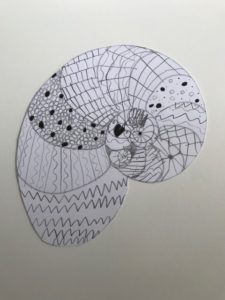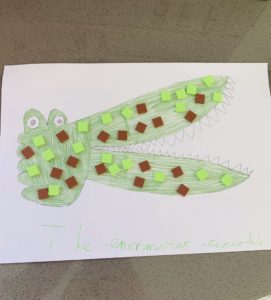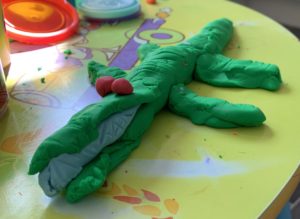Year 2- Monday 30th March
Good Morning Year 2
We hope you all had a lovely weekend and have managed to get some fresh air. Make sure you take frequent breaks, and wash your hands regularly throughout the day. Last week seemed a bit strange but we are getting into the routine of it now and hope you are too. Carry on being good for your parents and keep working hard. It is just this week and then we will have a break for the Easter Holidays. Over Easter, each week, we will upload some fun activities for you to complete, and then our learning activities will resume after the Easter Holidays.
Well done for all of your work last week. We’ve had some lovely photos sent in with some very persuasive letters to The Enormous Crocodile. We’re not sure if you persuaded him but you have definitely persuaded us! Well done to Ella, Ellie and Florence for the lovely art work below.



If you would like to read the remainder of the Enormous Crocodile story by Roald Dahl, you can read it here: Roald Dahl – The Enormous Crocodile.
Many thanks,
Year 2 Team
Helpful Reminders
Don’t forget you can email us on year2@stmarksce.org.uk. We would love to hear from you if you have a question, need a password, need some help, want to show us your work or even just say hello! Please get your grown up’s permission before you email us. We look forward to hearing from you. We may not reply the same day!
Presentation – Please remember to do your very best work. Handwriting and presentation are as important at home as they are in school. You can complete your work in a book or if you need lined or squared paper you can get it here.
Note for parents: Hopefully your children will enjoy working through these activities and can do independently. We completely understand it may be difficult to complete all these tasks due to other family commitments or you are working from home, so please do not worry; complete what you can with your child.
Ongoing Daily Activities
Here are the daily activities for you to complete each day. We have added a handwriting booklet that you could work through very gradually, not in one go. You can either print the booklet, or do this onto paper of your own at home. We look forward to seeing how amazing your handwriting will be when we see your work. The Common Exception Words should also be learnt gradually, by selecting 2 or 3 words a week that you should aim to learn along side your weekly spellings.
20 minutes of reading either a school book or a home book.
Learn your 2,5 and 1o times tables using TTRockstars, or a different method.
Complete your weekly spellings which will be provided below and on Spelling Shed, and the Year 2 common exception words.
Use The Spelling Shed to learn your spellings.
Year 2 weekly spellings- 30.3.20
 Over the last few days, you should have received an email from us with your child’s login details for Spelling Shed. This is a site where your children can learn their spellings through different games and activities, They can play in ‘Shed’ and ‘Bee Keeper’ (which is a bit like hangman). Children in Year 3 and 4 already use this site for their spellings and have really enjoyed the activities. We hope year 2 will too! Please let us know if you have any issues or haven’t received your login details.
Over the last few days, you should have received an email from us with your child’s login details for Spelling Shed. This is a site where your children can learn their spellings through different games and activities, They can play in ‘Shed’ and ‘Bee Keeper’ (which is a bit like hangman). Children in Year 3 and 4 already use this site for their spellings and have really enjoyed the activities. We hope year 2 will too! Please let us know if you have any issues or haven’t received your login details.
English
Today in English, we will be completing research about real crocodiles to write a fact card tomorrow, You will need to find out how to lay out your fact card and will need to find information that you would like to include. Try to find as many exciting facts as you can and think about how you will lay out these facts to grab the reader’s attention.
 Loading…
Loading…
Sites that may be useful for research:
Fact File Planning Sheet: Crocodile Fact File Planning Sheet
Maths: White Rose Maths (an overview)
From now onwards, for most of our online math’s lessons, we are going to be using a new resource to support us in completing our learning. ‘White Rose Maths’ are a community of Maths practitioners who develop Maths education by providing medium term planning and resources to schools. Within our every day lessons at school, we use White Rose as a basis for our Maths learning and children are used to learning in this style. Over the last few days, White Rose have released some high quality materials to support home learning, through videos and activity sheets, Each day, we will give you a summary of the Maths learning, and signpost you to the video we would like your child to watch which will be followed by an activity to complete. The answers will also be available to aid with marking.
Math’s learning for today
For today’s Maths activity, we will spend some time revising fractions, a topic we have recently covered in school. The aim of today’s task is to help consolidate your child’s understanding of recognising a third, considering how many parts an object or number needs to be split into in order to represent a third, During this session it is important to reiterate the importance of each part being equal.
Please use this link to access today’s learning. Simply click on this link below, and scroll to find ‘Lesson 1 Step 6- Recognising a third’. You can then watch the video to explore this concept before having a go at the worksheet provided. We have skipped the prior lessons as we had covered similar in class but if your child has difficulty with today’s learning then please feel free to move back to previous lessons on halves and quarters to support your child’s understanding. When you have completed the sheet you can check your answers using the answer sheet which is also provided. If you have any questions regarding this new resource, please email us at year2@stmarksce.org.uk
https://whiterosemaths.com/homelearning/year-2/
Science
Do you know what a handspan is? Today you will be using handspans to measure objects in the home.
Your second challenge is to find different ways to record your results. There are some examples for you to look at in the pdf below. You might also like to use handprints for an art and craft activity. There are some ideas to get you started.
You could also try the life cycle activity, which builds on the work that we completed in school. After sorting the pictures, you could look for similarities and differences between the life cycles.
 Loading…
Loading…
Resources you might need: